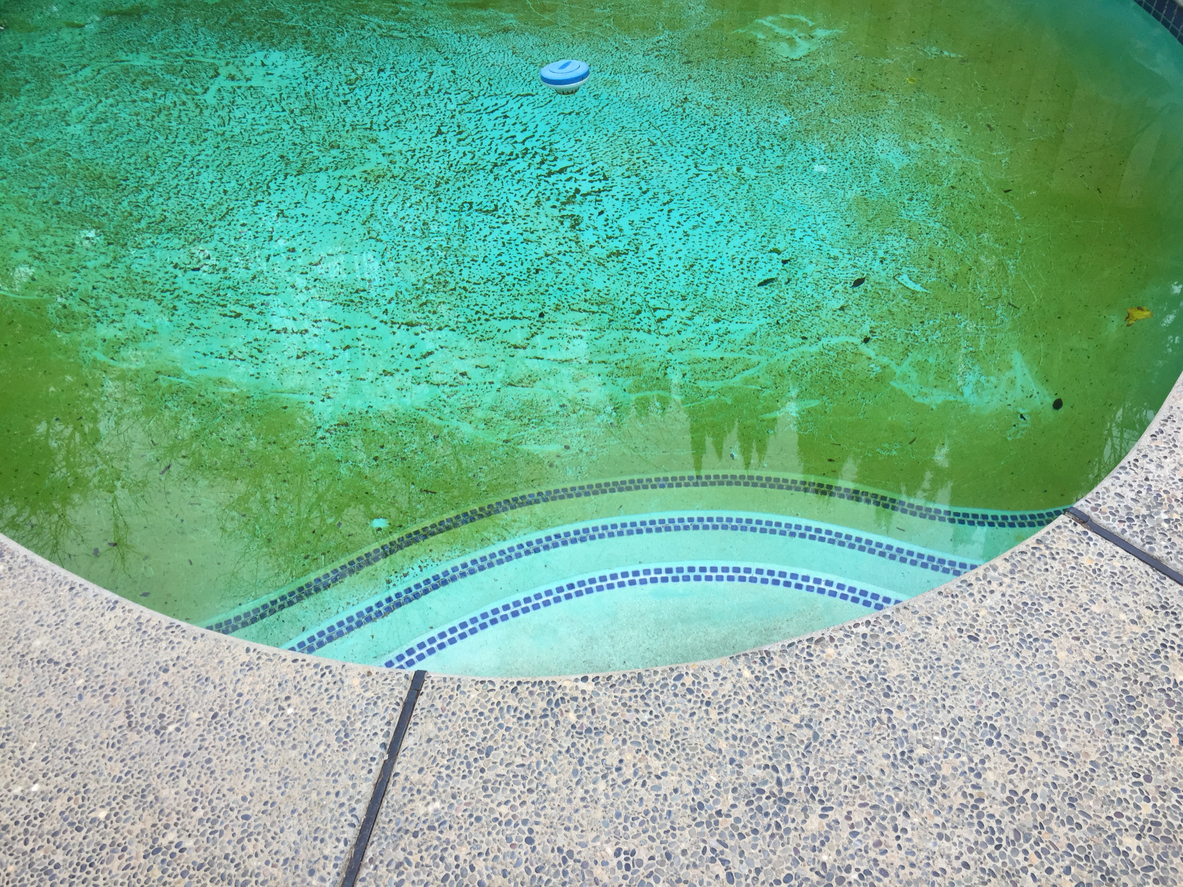
Are the pretty patterns on your pool tiles covered with chalky film, blotchy white stains, and scaly minerals? This is most likely the result of calcium buildup, which is a real problem in areas with hard water, which is prevalent in many parts of the Sun Belt, particularly Arizona and Nevada. Here are some tips for removing calcium and white stains from your pool tile, straight from the pros at SPS PoolCare.
- Use Vinegar & Elbow Grease
- Apply A Non-Toxic Calcium Remover
- Try Muriatic Acid
- Use A Pressure Washer
- Get Professional Bead Blasting
WHY MINERAL SCALING IS BAD FOR YOUR POOL
Hard water stains and calcium deposits, also known as limescale, aren’t just unattractive. Over time, this scale can clog your filters, causing them to work less efficiently. If the buildup flakes off the tiles and sinks to your pool bottom, it can scratch and damage the floor surface. What’s worse, it can hurt your friends and family by irritating swimmers’ eyes and skin. For these reasons, it’s best to keep your pool tiles and water clean and free of excessive calcium.
USE VINEGAR & ELBOW GREASE TO TACKLE SMALL AREAS
If you decide to tackle tile stains with vinegar and elbow grease, get ready to put some time in. Choose a brush, stone, or sponge designed for your type of swimming pool. Stiff brushes or a pumice stone might be okay on plaster but will scratch fiberglass and delicate tiles, which should be cleaned with a soft textured sponge.
Mix some vinegar with a small amount of water and use the brush or sponge to scrub tiles gently. This can help remove small areas of calcium carbonate buildup.
APPLY A NON-TOXIC CALCIUM REMOVER
If vinegar doesn’t do the trick, you can purchase a non-toxic calcium remover designed to release the mineral without damaging your tiles or changing the water’s pH. You’ll need to drain off enough water to be able to access any white stains first.
Follow the directions on the label, which usually have you apply the cleaner to the tile, then let it sit and bubble. Scrub off the loosened deposit with an appropriate cleaning pad or brush. You may have to repeat this process multiple times over each layer of the buildup.
REMOVE WHITE STAINS WITH MURIATIC ACID
Muriatic acid works on some white pool stains. However, you should handle it with extreme care, wearing gloves and goggles to prevent skin irritation or acid burns. Follow the directions on the label.
CAREFULLY USE A PRESSURE WASHER
You can remove some buildup with a pressure washer, available for rent at many hardware stores. But be careful, especially if you have loose tiles. Dislodging loose tiles with a pressure sprayer could leave you worse off than before.
GET PROFESSIONAL BEAD BLASTING
If you have significant tile stains and scaling, your best bet is to invest in the services of a professional pool cleaning company. Bead blasting utilizes a compressor to blast magnesium sulfate or similar material to remove the calcium deposits quickly, without damaging your pool. Once your pool is restored to a scale-free state, you can get on a maintenance schedule to prevent the problem from recurring.
To keep your tiles sparkling and prevent new buildup from occurring, you’ll need to stay on top of your pool cleaning game.
- Turn off water features like waterfalls and sheer descents when not in use.
- Maintain proper pH levels.
- Use anti-scaling pool chemicals as appropriate.
- Schedule regular service by a local pool pro.
PROFESSIONAL BEAD BLASTING & POOL CLEANING
Why waste hours in the blazing sun scrubbing away at caked on calcium deposits and baked on hard water stains? Our pool professionals have the tools and skills needed to get your pool tiles clean and scale-free. Call your local SPS PoolCare branch today for more information about bead blasting or to schedule regular pool service.


